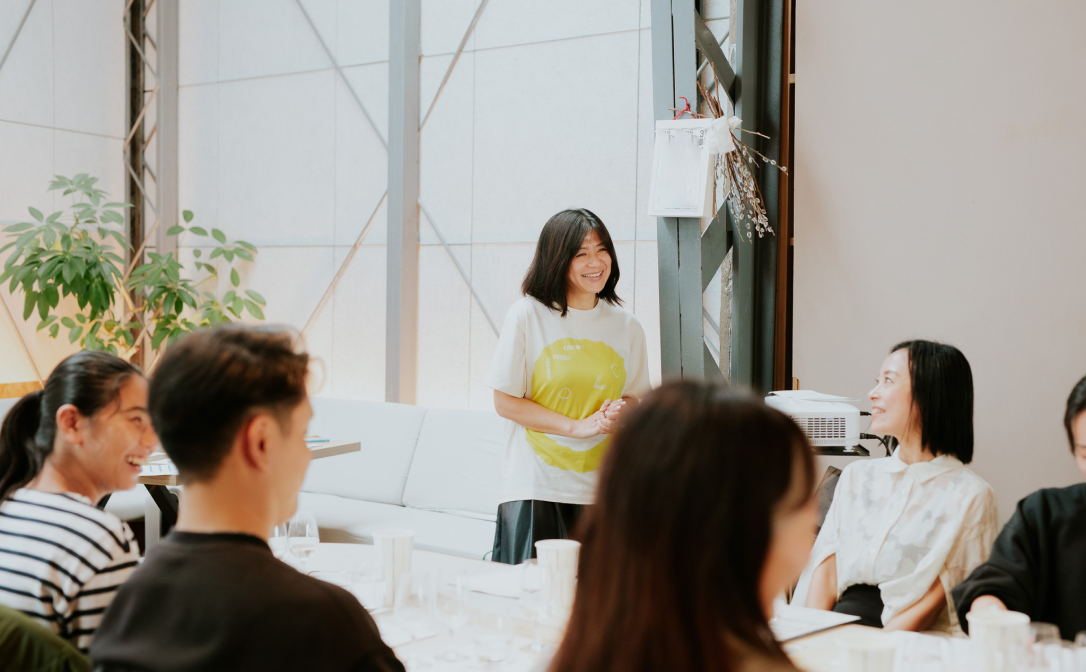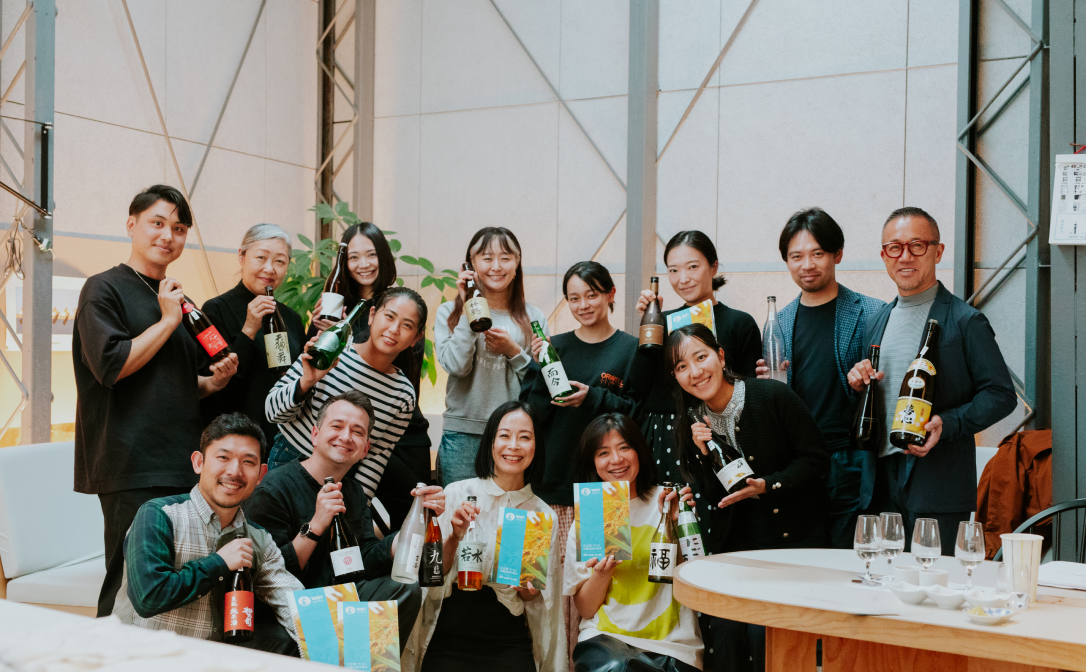For the first time ever, WSET Level 2 Award in Sake has been delivered in Japanese. Held over three days in Tokyo, the course brought together a vibrant group of drinks professionals, educators and enthusiasts, each sharing a deep passion for sake, and each experiencing the qualification in their native language.
The course was led by Natsuki Kikuya, Sake Samurai and our Senior Sake Researcher, in collaboration with TERAKOYA IMADEYA, a WSET approved course provider, and one of Japan’s most influential sake and drinks specialists. With a network of over 7,000 restaurants, they’re at the forefront of sake appreciation and education in Japan. Their classroom space, located in Kiyosumi Shirakawa – a creative, slow-paced corner of eastern Tokyo – offered the perfect setting for thoughtful learning and discussion.
Three days of sake
Over the course of three days, eleven participants immersed themselves in the world of sake. Bartenders, drinks influencers, sake professionals and brewery members all approached the course with different perspectives but were united by curiosity and a love for the category.
The first day introduced the core concepts: sake production, the basics of tasting, and the WSET Level 2 Systematic Approach to Tasting Sake® (SAT). Five distinct sake styles were tasted and discussed – from futsushu to daiginjo and sweet kijoshu – while participants sharpened their sensory vocabulary and began calibrating their palates. Through close analysis of appearance, aroma and flavour, they began to explore quality markers like balance, length, complexity and purity.
The afternoon focused on ingredients: how rice, koji, water and yeast interact to shape a sake’s character. From rice polishing ratios to yeast strain choices and fermentation temperatures, the class explored how technical decisions in the brewery directly affect the final style. The tastings brought theory to life, allowing students to compare sakes made with different rice varieties, yeast types and production approaches.
By day two, a sense of connection was forming in the room. Building on the SAT skills learned the day before, the class explored a wider range of sake styles, examining different shubo (starter) methods, tokubetsu labels and finishing techniques. One highlight was a session on the speciality style nama (unpasteurised), which is rarely available outside Japan due to the instability caused by the active enzymes in the bottle. Other styles including nigori (cloudy), sparkling and koshu (aged) sake provided an exciting tasting session using full senses. Each production process creates noticeable differences in appearance, aroma and texture.
On the final day, the class explored how temperature and food pairing influence a sake’s character. Hands-on tasting sessions brought a joyful, practical element to the learning, highlighting how knowledge gained in the classroom can enhance everyday enjoyment of sake.

Natsuki Kikuya in her element
A story of sake success
Throughout the course, the emphasis was on interaction and analysis—asking “how” and “why” rather than simply memorising facts. For some students, this approach was unfamiliar but eye-opening.
One participant reflected: “I was anxious at first because many had professional experience in sake. However, even as someone who only enjoys sake casually as a hobby, the course provided me with a solid understanding. As WSET Level 2 Award in Sake doesn’t include a blind tasting exam, it makes it very accessible even for casual sake enthusiasts. It also inspired me to aim for Level 3 in the future. Overall, I found WSET Level 2 to be a wonderful tool for deepening people’s interest in sake, and I’m really looking forward to exploring more!”
Others commented on the depth of insight provided, particularly on production and tasting:
“Through this course, I was able to deeply explore aspects in sake production such as koji production, which aren't covered in sommelier exams, and systematically learned methods for sake tasting, which left a strong impression on me. Additionally, experiencing firsthand how sake's flavours change between warm and cold servings, and how the balance of the five tastes impacts overall flavour during the sake and food pairing experiment, provided invaluable insights for my growth as a bartender.”
Another said: “I had never really taken the time to properly evaluate the quality of sake before, so this experience allowed me to reconnect and engage with sake on a deeper level.”
For Natsuki, who has led WSET’s work in sake education for over a decade, the experience was deeply meaningful.
“Within my eleven years at WSET, this was one of the most monumental moments – to bring a sake qualification back to its home country, Japan, and in its own language.
“Although global sake exports and consumption are expanding, the domestic sake market in Japan continues to fall to less than one quarter of its peak volume in 1973, and the number of breweries has declined by sixty percent in just the last twenty years. I hope through WSET sake education, we can bring new insight to the domestic market and help to activate and protect the industry by spreading the love of this unique and beautiful drink.”

The successful group of students
With all participants successfully passing their exam, the course was both a personal and professional high point, and a hopeful sign for the future of sake education in Japan.
Click for all the details on our Level 2 Award in Sake, or to find a course provider near you.


